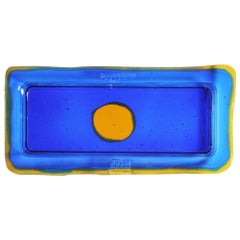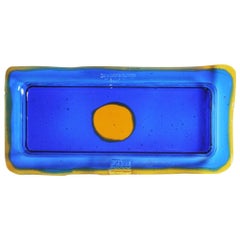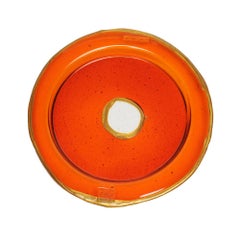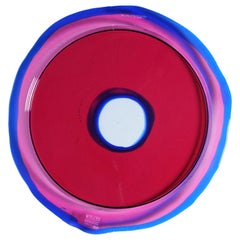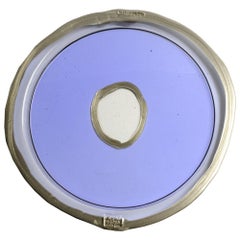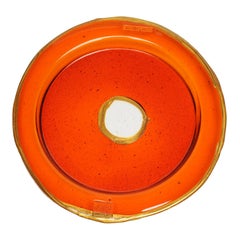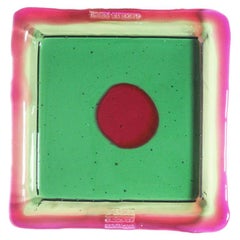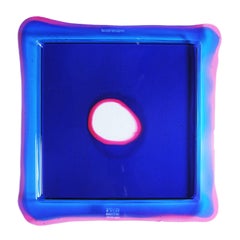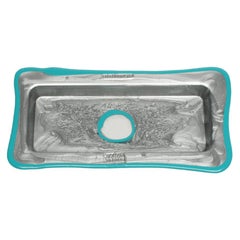Gaetano Pesce Tray
21st Century and Contemporary Italian Tableware
Resin
21st Century and Contemporary Italian Tableware
Resin
21st Century and Contemporary Italian Tableware
Resin
21st Century and Contemporary Italian Tableware
Resin
21st Century and Contemporary Italian Tableware
Resin
21st Century and Contemporary Italian Tableware
Resin
21st Century and Contemporary Italian Tableware
Resin
21st Century and Contemporary Italian Tableware
Resin
21st Century and Contemporary Italian Tableware
Resin
21st Century and Contemporary Italian Tableware
Resin
21st Century and Contemporary Italian Tableware
Resin
21st Century and Contemporary Italian Tableware
Resin
21st Century and Contemporary Italian Tableware
Resin
21st Century and Contemporary Italian Tableware
Resin
21st Century and Contemporary Italian Tableware
Resin
21st Century and Contemporary Italian Tableware
Resin
21st Century and Contemporary Italian Tableware
Resin
21st Century and Contemporary Italian Tableware
Resin
21st Century and Contemporary Italian Tableware
Resin
21st Century and Contemporary Italian Tableware
Resin
21st Century and Contemporary Italian Tableware
Resin
21st Century and Contemporary Italian Tableware
Resin
21st Century and Contemporary Italian Tableware
Resin
21st Century and Contemporary Italian Tableware
Resin
21st Century and Contemporary Italian Tableware
Resin
21st Century and Contemporary Italian Tableware
Resin
21st Century and Contemporary Italian Tableware
Resin
21st Century and Contemporary Italian Tableware
Resin
21st Century and Contemporary Italian Tableware
Resin
21st Century and Contemporary Italian Tableware
Resin
21st Century and Contemporary Italian Tableware
Resin
21st Century and Contemporary Italian Tableware
Resin
21st Century and Contemporary Italian Tableware
Resin
21st Century and Contemporary Italian Tableware
Resin
21st Century and Contemporary Italian Tableware
Resin
21st Century and Contemporary Italian Tableware
Resin
21st Century and Contemporary Italian Tableware
Resin
21st Century and Contemporary Italian Tableware
Resin
21st Century and Contemporary Italian Tableware
Resin
21st Century and Contemporary Italian Tableware
Resin
21st Century and Contemporary Italian Tableware
Resin
21st Century and Contemporary Italian Tableware
Resin
21st Century and Contemporary Italian Tableware
Resin
21st Century and Contemporary Italian Tableware
Resin
21st Century and Contemporary Italian Tableware
Resin
21st Century and Contemporary Italian Tableware
Resin
21st Century and Contemporary Italian Tableware
Resin
21st Century and Contemporary Italian Tableware
Resin
21st Century and Contemporary Italian Tableware
Resin
21st Century and Contemporary Italian Tableware
Resin
21st Century and Contemporary Italian Tableware
Resin
21st Century and Contemporary Italian Tableware
Resin
21st Century and Contemporary Italian Tableware
Resin
21st Century and Contemporary Italian Tableware
Resin
21st Century and Contemporary Italian Tableware
Resin
21st Century and Contemporary Italian Tableware
Resin
21st Century and Contemporary Italian Tableware
Resin
21st Century and Contemporary Italian Tableware
Resin
21st Century and Contemporary Italian Tableware
Resin
21st Century and Contemporary Italian Tableware
Resin
- 1
Gaetano Pesce Tray For Sale on 1stDibs
How Much is a Gaetano Pesce Tray?
Gaetano Pesce for sale on 1stDibs
Gaetano Pesce was of a generation of Italian architects who in the early 1960s rebelled against the industrial perfection of modernism by conceiving new furniture and objects that were at once expressive and eccentric in form; or you might say they were more like art than functionalist design.
Born in the picturesque coastal Italian city of La Spezia in 1939, Pesce was a precocious talent who could have forged a career as an artist but opted instead to go to Venice to study architecture because, as he has said, it was “the most complex of all the arts.” Rather than having new worlds opened to him at design school, however, Pesce found the rationalist curriculum oppressive in its insistence on standardization and prescribed materials and technologies.
Pesce wanted to explore the latest of both materials and technologies to create objects and buildings never before imagined, with what he called “personalities” that spoke to the issues of the day. He was keen to examine ways to diversify mass production so that each manufactured work could be distinct.
In 1964, Pesce met Cesare Cassina, of the forward-looking furniture company C&B Italia in Milan (now known as B&B Italia), for whom he would create many important designs, beginning with a collection of what he called “transformational furniture” — two chairs and a loveseat — made entirely out of high-density polyurethane foam. To make the pieces easy to ship and cost-efficient, he proposed that after being covered in a stretch jersey, they be put in a vacuum, then heat-sealed flat between vinyl sheets. Once the foam was removed from its packaging, the piece returned to its original shape — hence, the name Up for the series, which debuted in 1969.
In addition to these pieces, Pesce proposed for the collection something he referred to as an “anti-armchair,” which took the shape of a reclining fertility goddess, the iconic Donna.
Producing the piece's complex form turned out to be a technical challenge. Bayer, the foam’s manufacturer, deemed it impossible to accomplish. Pesce persisted and came up with a new procedure, demonstrating not only the designer’s key role in researching the nature and potential of new materials but also his vital importance in “doubting rules.” The Up chair and accompanying ottoman were born, and they were revolutionary in more ways than one.
In the early 1970s, Pesce began exploring one of his key concepts, the idea of the industrial originals. Employing a mold without air holes, and adding a blood-red dye to the polyurethane, he cast a bookcase that resembled a demolished wall, the rough edges of the shelves and posts resulting from fissures in the material made by trapped air.
Through his research into polyurethane, Pesce figured out a way to make a loveseat and armchair using only a simple wood frame and strong canvas covering as a mold. Since the fabric developed random folds during the injection process, the pieces were similar but not identical. Cassina named the suite of furnishings Sit Down and introduced it in 1975. By experimenting with felt soaked in polyurethane and resin, Pesce conceived I Feltri, another collection of armchairs introduced by Cassina in 1987.
Pesce went on to live a life that defied expectation and convention and along the way became one of the most seminal figures in art and design.
Find vintage Gaetano Pesce chairs, sofas, vases and more on 1stDibs.
Finding the Right Tableware for You
While it isn’t always top of mind for some, antique and vintage tableware can enhance even the most informal meal. It has been an intimate part of how we’ve interacted with our food for millennia.
Tableware has played a basic but important role in everyday life. Ancient Egyptians used spoons (which are classified as flatware) made of ivory and wood, while Greeks and Romans, who gathered for banquets involving big meals and entertainment, ate with forks and knives. At the beginning of the 17th century, however, forks were still uncommon in American homes. Over time, tableware has thankfully evolved and today includes increasingly valuable implements.
Tableware refers to the tools people use to set the table, including serving pieces, dinner plates and more. It encompasses everything from the intricate and elaborate to the austere and functional, yet are all what industrial product designer Jasper Morrison might call “Super Normal” — anonymous objects that are too useful to be considered banal.
There are four general categories of tableware — serveware, dinnerware, drinkware and, lastly, flatware, which is commonly referred to as silverware or cutlery. Serveware includes serving bowls, platters, gravy boats, casserole pans and ladles. Most tableware is practical, but it can also be decorative. And decorative objects count as tableware too. Even though they don’t fit squarely into one of the four categories, vases, statues and floral arrangements are traditional centerpieces.
Drinkware appropriately refers to the vessels we use for our beverages — mugs, cups and glasses. There is a good deal of variety that falls under this broad term. For example, your cheerful home bar or mid-century modern bar cart might be outfitted with a full range of vintage barware, which might include pilsner glasses and tumblers. Specialty cocktails are often served in these custom glasses, but they’re still a type of drinkware.
Every meal should be special — even if you’re using earthenware or stoneware for a casual lunch — but perhaps you’re hosting a dinner party to mark a specific event. The right high-quality tableware can bring a touch of luxury to your cuisine. Young couples, for example, traditionally add “fine china,” or porcelain, to their wedding registry as a commemoration of their union and likely wouldn’t turn down exquisite silver made by Tiffany & Co. or Georg Jensen.
It’s important to remember, however, that when you’re setting the dining room table to have fun with it. Just as you might mix and match your dining chairs, don’t be afraid to mix new and old or high and low with your tableware. On 1stDibs, find an extraordinary range of vintage and antique tableware to help elevate your meal as well as the mood and atmosphere of your entire dining room.
